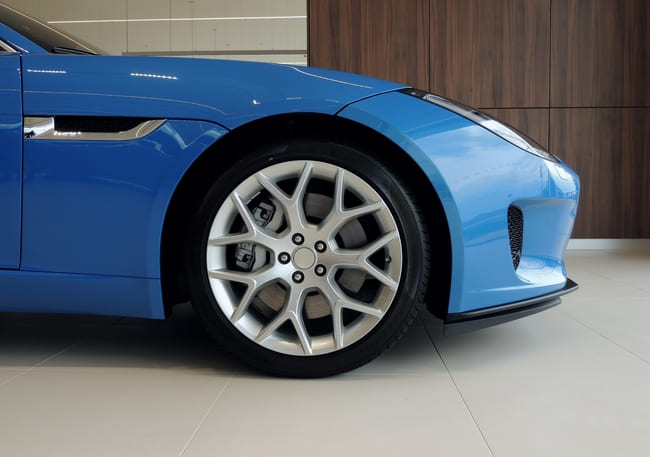
What is wheel offset?
Wheel offset explained
The wheel offset is technically the distance measured (in mm) from the wheel hub mounting surface to the centreline of the wheel. It indicates how far the wheel will stick out from the mounting surface. Installing wheels with the proper offset ensures that they don’t rub against the suspension, fenders or brakes. It can also affect the stability and handling performance of the vehicle.

The difference between negative and positive wheel offset
There are three types of offset:
- Positive
This is when the hub mounting surface is in front of the wheel’s centreline, sitting further towards the street. Most front-wheel drive and new rear-wheel drive cars have this kind of offset. An offset that is too positive could lead to interference with the brake components and cause tyre damage. Positive offset wheels are tucked underneath the car.
- Negative
The offset is negative when the hub mounting surface is behind the centreline, towards the back of the wheel. This is typically the case for “deep dish rims”. If it is too negative for the vehicle, it can put additional stress on the suspension system and cause increased steering kickback. The more negative the offset, the more the wheel pushes outwards.
- Zero
This is when the mounting surface is exactly in line with the wheel’s centreline.
What’s backspacing?
Backspacing is simply the distance measured from the back edge of the wheel rim to the back of the mounting pad. It is essentially the distance required to accommodate the offset and width of the wheel. It is an important factor when choosing new wheels. For example, If you’re installing new alloy wheels that are wider than the old wheels, adjustments will need to be made to the offset.
Here you can find car tyres, tools for wheel replacements or new deals on car wheel brace and critical parts.
How to measure wheel offset
If, for whatever reason, you needed to work out the offset yourself, you can do so with a simple calculation. First of all, you measure the overall width of the wheel, then you can find the wheel’s centreline which is half (the centre) of the width. The last measurement you’ll need is the distance from the back edge of the rim to the mounting surface. Finally, take half of the width (the centreline point) away from the distance between the back edge and the mounting surface to get the offset.

How to find your wheel offset
There is usually an ET number stamped on the wheel, which gives you the offset value in millimetres. ET is an abbreviation of the German word ‘Einpresstiefe’. This number can normally be found on the spokes or mounting face of the wheel.
Wheel offset examples:
- Zero offset is often indicated by the value ET10. You may be able to see that there is no difference in the positioning of the wheel itself and the wheel arches of the vehicle.
-
Positive: For example, you might have a wheel that is 9 inches wide with an 18 inch diameter and an ET35 offset. This means that the wheel has a positive offset of 35mm.
-
Negative: These wheels are normally found on offroad vehicles or trucks with fender flares. For example, an offroad car’s wheels may have an offset of -12mm (ET-12).
Can you change the offset?
Wheel offset is only something that should only be changed for specific tuning purposes or when switching to wider wheels.
For example, you may choose rims with a more negative offset to widen the wheel track, giving you greater stability when cornering, or you may just want to improve the stance of your car. However, there is a downside to this. A wider track can put more stress on the axle, bearings and wheel hubs, causing premature wear. Let’s hope you’re carrying an emergency car tyre repair kit because there is a higher risk that the tyres and wheels will get damaged from rubbing against the fenders.
A positive offset, on the other hand, allows you to install wider wheels without them sticking too far out. It also helps prevent fender rubbing problems. The main disadvantage of positive offset wheels is that the edge of the wheels and tyres can rub against the suspension components. For this reason, you still have to watch out for tyre failure. The brakes can also get damaged if there isn’t enough clearance between the calipers and rims.
TOP products on the subject:






